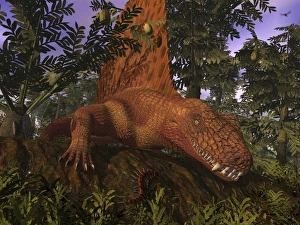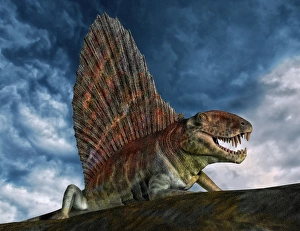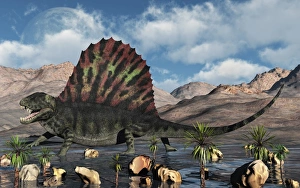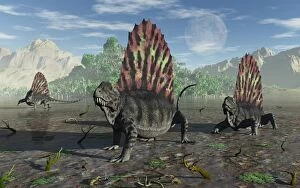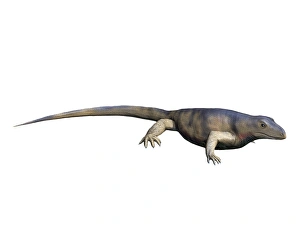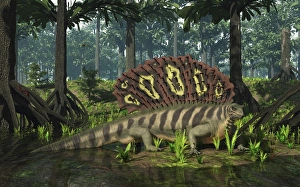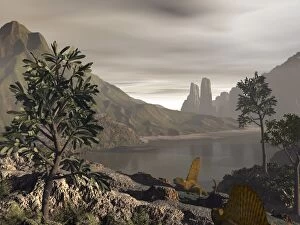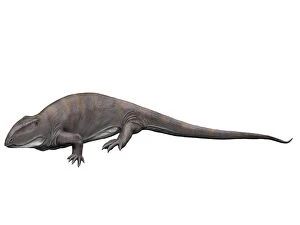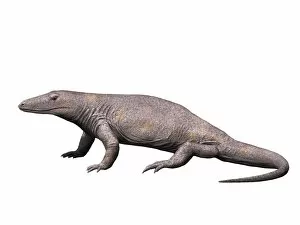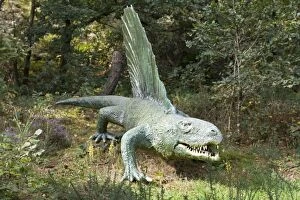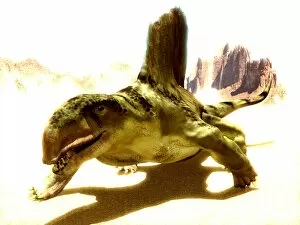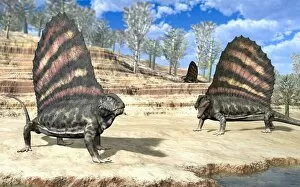Pelycosaur Collection
"A Glimpse into the Prehistoric World: The Pelycosaurs" Step back in time and witness a captivating scene - a Dimetrodon amongst Alethopteris ferns
All Professionally Made to Order for Quick Shipping
"A Glimpse into the Prehistoric World: The Pelycosaurs" Step back in time and witness a captivating scene - a Dimetrodon amongst Alethopteris ferns, creating an enchanting contrast. This magnificent sail-backed reptile from the Permian period stands out against the lush greenery. In this mesmerizing image on a white background, we can truly appreciate the unique features of the Dimetrodon. With its distinctive sail and powerful build, it was an apex predator during its time. A 3D rendering brings this ancient creature to life, allowing us to marvel at its intricate details. Travel further back in history as we encounter a group of sail-backed Dimetrodons roaming Earth's Permian period. These majestic creatures ruled their environment with their imposing presence and remarkable adaptations. But let's not forget about other fascinating synapsids that inhabited our planet millions of years ago. Archaeothyris, hailing from Canada's Late Carboniferous Period, showcases another intriguing member of this diverse group. Venturing into different landscapes, we stumble upon an Edaphosaurus foraging in a brackish mangrove-like swamp. Its elongated body and unique head crest make it stand out among its contemporaries. Delving deeper into prehistory takes us to Germany's Early Permian era where Pantelosaurus saxonicus roamed. This lesser-known species adds to our understanding of the incredible diversity that once existed on Earth. Finally, let us admire yet another front view of the awe-inspiring Dimetrodon reptile as it roams through the Mid-Permian Period. Its dominance is evident as it traverses through ancient terrains with unmatched grace and power. These glimpses into prehistoric times remind us of how far life has evolved on our planet. The pelycosaurs were extraordinary beings that shaped Earth's history before making way for new forms of life.

